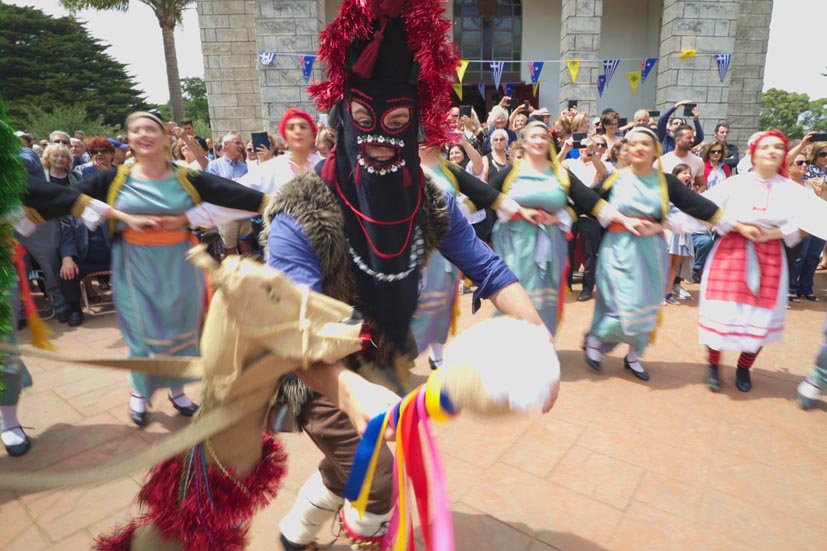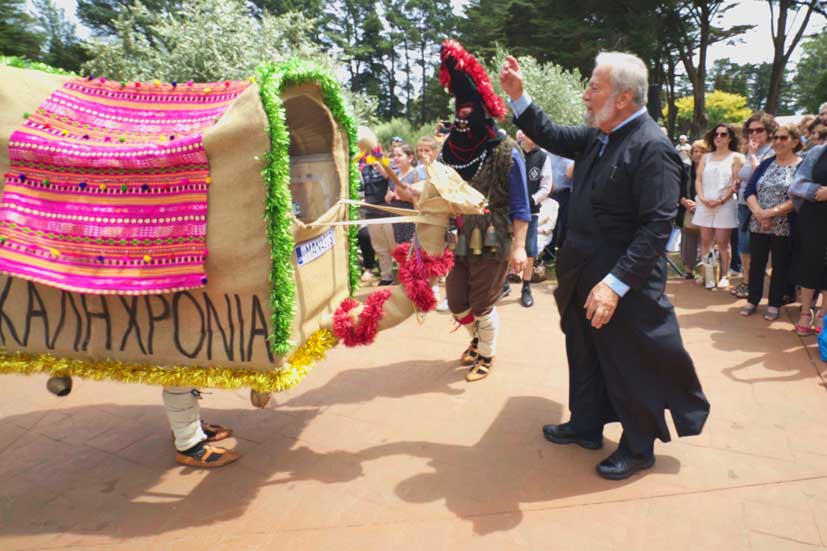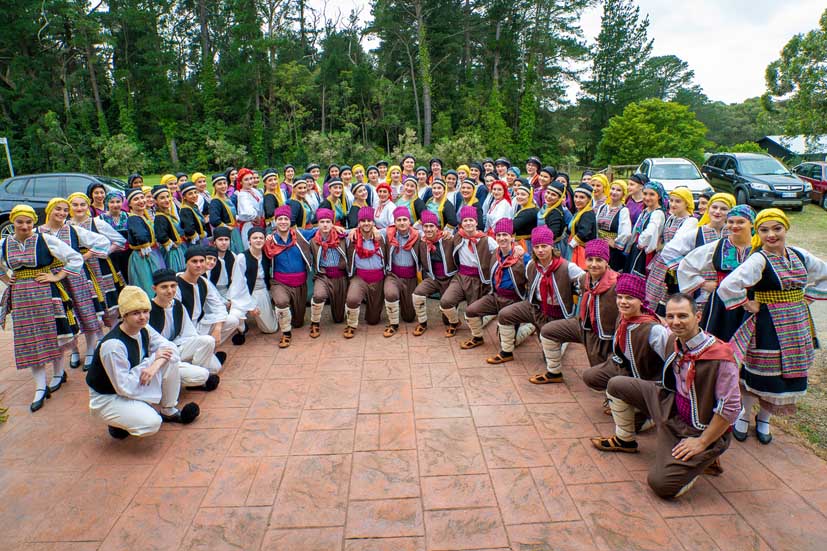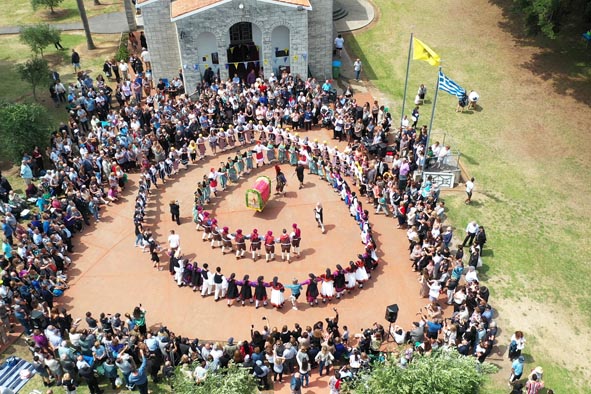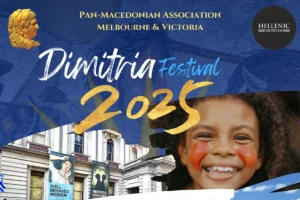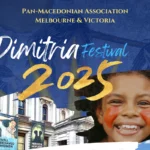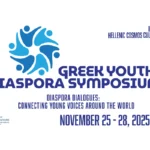A beautiful day took place at last weekend’s annual “Stafilia” (Grapes) Festival at Panagia Kamariani Greek Orthodox Church in Red Hill.
Thousands gathered this year for a very unique and awe-inspiring spectacle from the MANASIS School of Greek Dance and Culture and it was exceptional!
The dancers took the audience on a journey through most of mainland Greece, with a 30-minute, non-stop, breathtaking dance routine; beginning with the haunting sounds of Zournades and Daoulia through the regions of Serres and Drama, then moving into ‘klarina’ and the traditional demotic dances of Epirus and Thessalia, and concluding with ‘gaida’ bagpipes and the famous brass of Florina and Edessa.
At the conclusion of their dance performance, all the dancers stretched out and crossed arms to create an enormous human chain around the church forecourt ‘plateia’, and danced the famous Zonaradikos of Thrace.
Whist the dancers processed in a concentric circle, in came a makeshift ‘camel’ and camel-master: the “Kamiles kai Divitzides”- a New Year custom unique to Thrace, or more specifically to Anatoliki Romilia. Together with Melbourne’s premier DJ Chris Tsiantoulas, a glendi ensued and many of the festival’s attendees joined in to kick-start the party!
Anatoliki Romilia is in modern-day Bulgaria and Turkey, and was once part of the greater Thracian region up until the collapse of the Ottoman Empire and subsequent Balkan Wars, where it was carved up with only a small portion remaining in the ‘Greece’ that we see today.
The refugees who fled this war-torn region, settled in villages predominantly in modern-day Thrace and parts of Macedonia together with refugees from the better-known Asia Minor Catastrophe and Pontian Genocide. With them, they brought cultural treasures, customs and traditions which have survived the ravages of time, war, poverty and suffering.
The camels, reminiscent of the 3 kings (μάγοι) who rode on them and followed the star across the dessert to offer gifts to the newborn Jesus, symbolise health and prosperity. No two Kamiles or Divitzides are ever the same. Most are made from a type of hessian fabric, with bits of wood fixed together to make a frame and are carried by a man inside strapped to it. Like many costumes associated with the Dodekaimero or Apokries, they are all typically made with whatever a maker had at their disposal.
2020 marks the 100 year anniversary of the reunification of Thrace with the rest of Greece following the collapse of the Ottoman Empire- 1920.
Whilst next year- 2021 commemorates 200 years from the commencement of the revolutionary War of Independence, it’s important to note that Thrace has only been liberated for half of that time.
